AMA Tasting Report
Bordeaux 2021 In Bottle

During the en primeur tastings, I noted that the 2021 vintage was
“The Year of Winemakers”
“The Year of Terroir”
“The Year of Techniques”
And with a dash of Luck.
The weather conditions were exceptionally complex, making it difficult to choose.
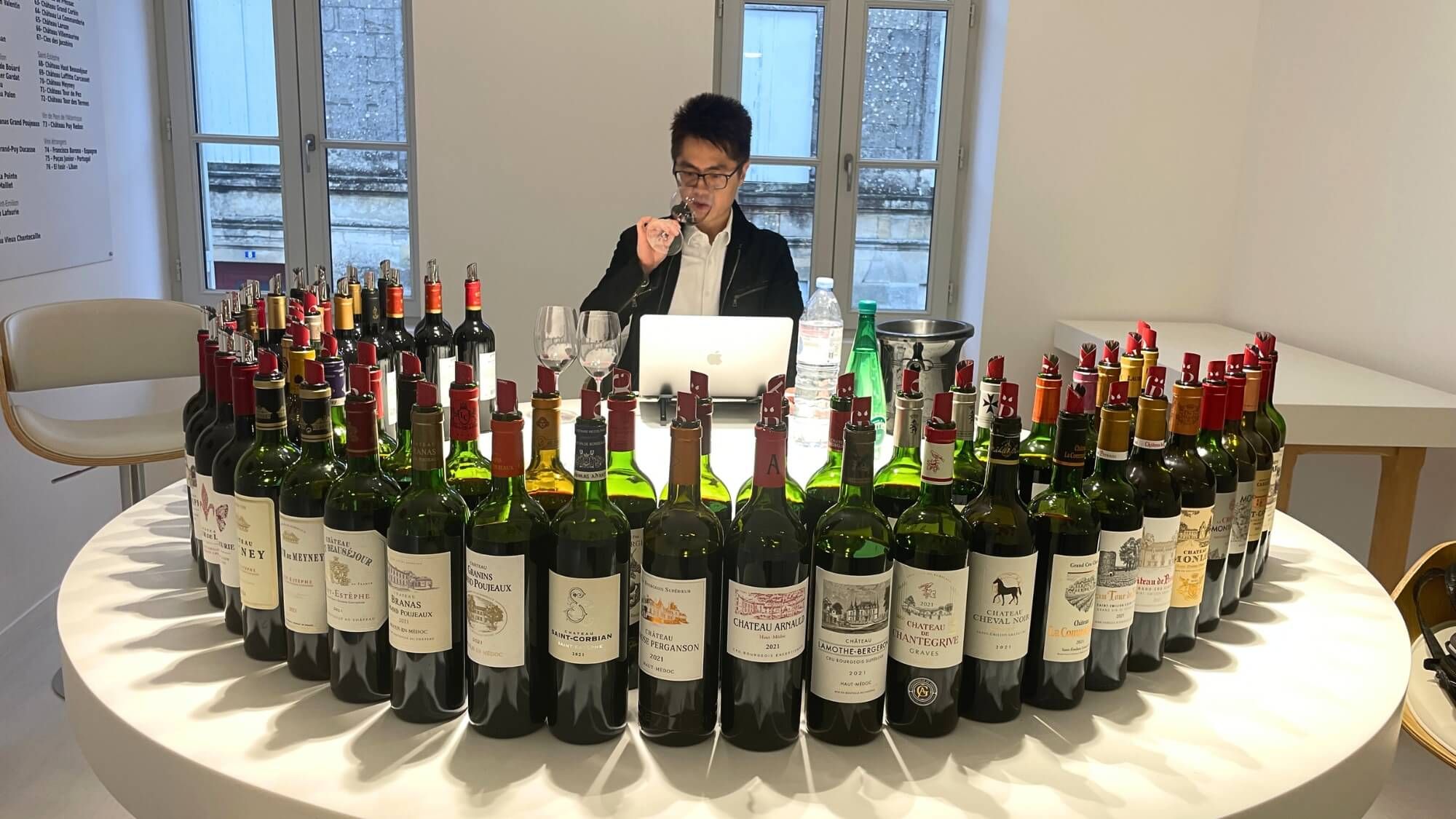
In the previous vintages, I needed taste between 1,000 to 1,400 bottled wines, but this year, there were just over 800 samples. Numerous wineries reached out via email to share their reasons for not sending samples. Some mentioned downgrading their wine to a second label or even to bulk due to unexpected quality; others said the production was not good enough because of weather issues in 2021.
Based on my tastings this vintage, 2021 can’t be considered a great in the traditional sense, but it certainly shouldn’t be dismissed as a poor vintage. Wineries like Château Durfort-Vivens, Château Cheval Blanc, Château de Pressac, and Château Margaux released a level that rival other more noticeable vintages.
Among the 800+ wines I tasted, merely around 350 wines are above 90 points, marking the lowest in recent years. The wines above 95 points are half of those in 2020, with just about 30 wines making the cut, and nearly half of them are white wines. Regarding wines scoring over 98 points and making it into AMA Kunlun Selection, only Château d’Yquem and Château Suduiraut are the stellar standouts of Bordeaux.
My overall rating for the 2021 vintage is:
★★☆☆☆

In terms of quality, the vintage of 2021 is certainly better than 2013 and 2007, and even holds its own against the 2014 vintage in terms of Grand Vin.
In terms of style, this year’s red wines lean towards a more delicate nature with lower alcohol, higher acidity, and a paler color compared to previous vintages. Certainly, without the support of high concentration and rich fruity aromas, any minor flaw is magnified.
In my view, the smart approach for this vintage is to go for a “less is more” aesthetic, expressing the limited elements in a pure and beautiful manner. The goal should be to quietly present a dapper, refined profile, avoiding unnecessary flamboyance. Those who overreached, attempting to mask deficiencies with oak or aiming to dominate in dimension and structure, often ended up with a contrived result.

Among the 800 bottled wines I tasted, the majority of wineries don’t perform as well as they did during the En Primeur tastings. The main issues are:
- The texture of the tannins became coarser.
- The charming roundness turned flat.
- The elegant and soft aromas became dull.
- The simple and gentle balance became too heavy.
- What was truly unacceptable were those wines showing the mildew-touched dried grapes, which diverged significantly in aroma and taste from their En Primeur presentations.

Left Bank and Right Bank, how to choose?
For top level Grand Vin, those on the Left Bank with a high proportion of Cabernet Sauvignon stand out more. However, when it comes to medium-level and entry-level wineries, I lean towards the Right Bank, especially those with a higher percentage of Cabernet Franc, situated on clay-limestone soils, or even those with a significant amount of clay.
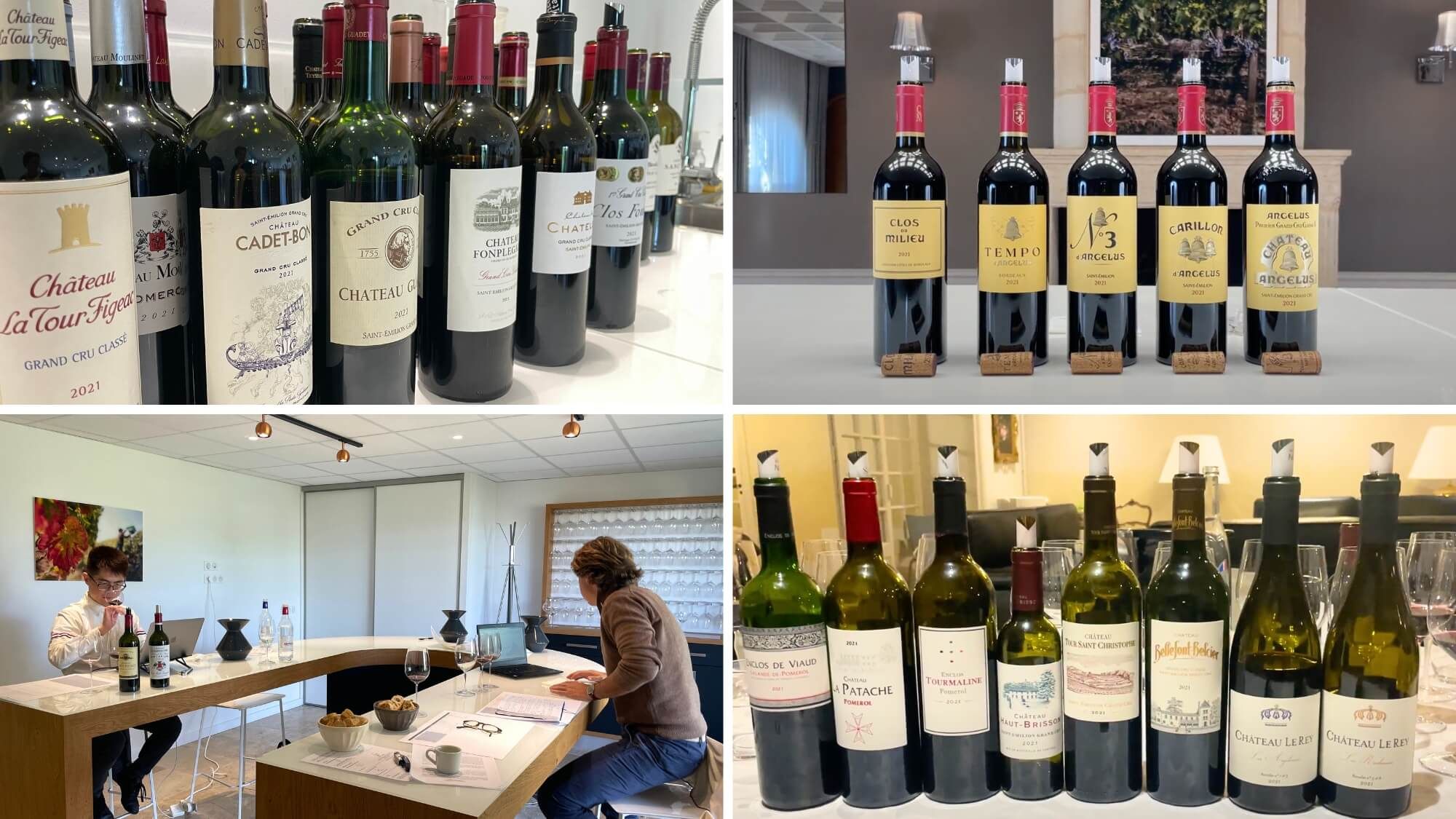
How about the white wine?
Although the red wines of 2021 are generally ordinary in terms of quality, the white wines are absolutely stellar, describing them as “fascinating” won’t be an overstatement. The sunny yet cool August might not be ideal for the ripening of red grapes, but it provides white grapes with lofty acidity and a complexity of flavors that come once in a decade.
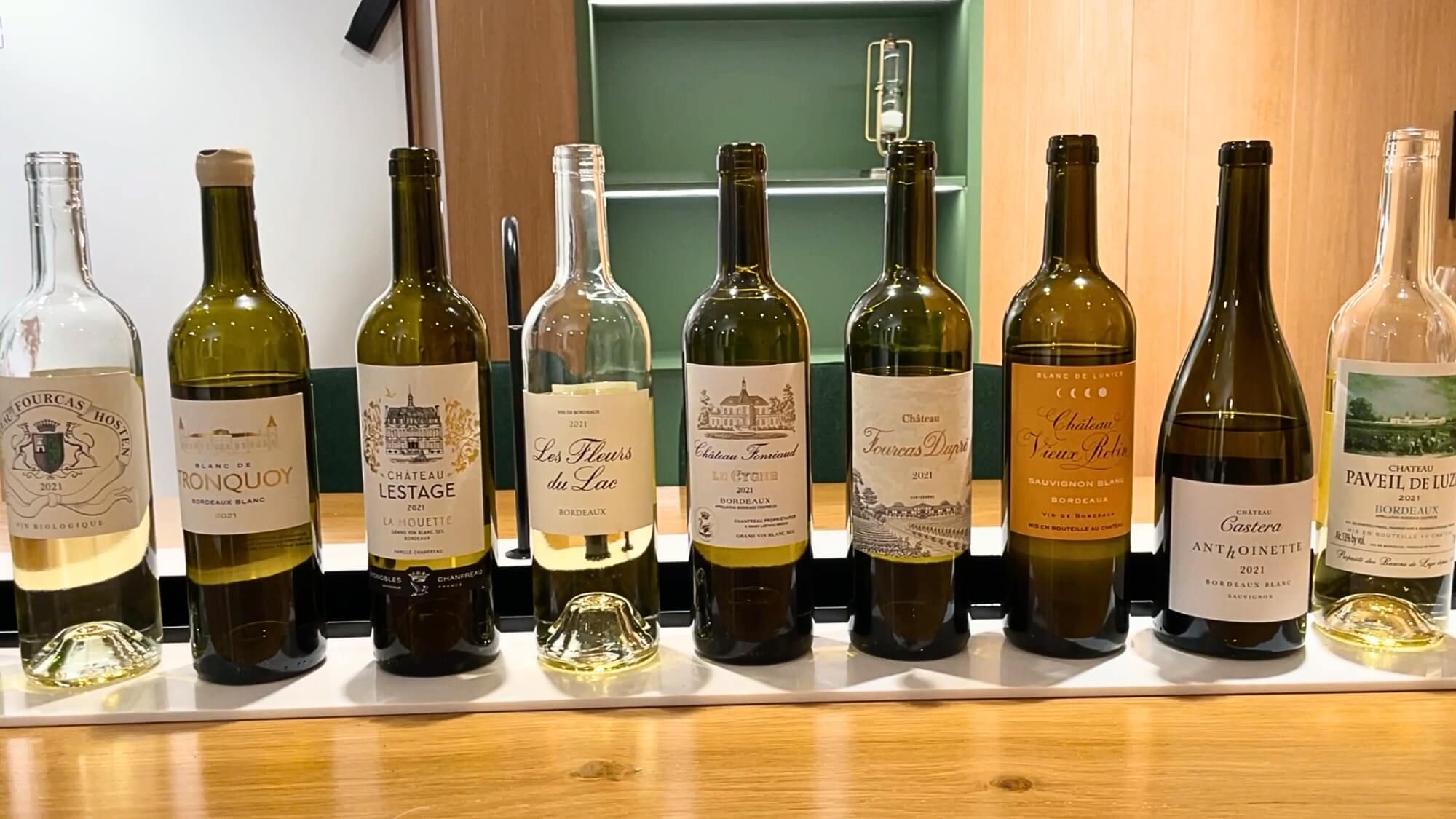
I mentioned during the En Primeur tastings that this vintage’s Sémillon and Sauvignon Blanc were both outstanding, Sémillon showcases the acidity typically associated with Sauvignon Blanc, and Sauvignon Blanc displays the oily texture just like Sémillon.
The bottled wines are even more impressive. Whether blends or varietals, they maintain their En Primeur level, with some top selections surpassing their initial showings. Tasting these wines feels like gazing up at the towering Burj Khalifa, strong and slender, shimmering with a metallic luster from afar. They’re the dream lovers for Bordeaux white wine amateurs.
Moreover, a 100% Chardonnay impresses me a lot, challenging my traditional views on Bordeaux’s Chardonnay and revealing that, with a good vintage, Bordeaux’s calcareous soils can produce great whites rivaling Meursault. I highly recommend trying the first vintage of Chardonnay d’Aiguilhe by Château d’Aiguilhe from 2021, which I believe could easily outshine many a “pretender” from Meursault and Puligny.

Saint-Émilion
Vineyards that mature later show superior performance in the 2021 vintage. Wineries like Château Tour Saint Christophe and Château de Ferrand, which have a higher proportion of clay, successfully avoided the rains of late September. Better ventilation also significantly reduced the risk of Mildew, making these wineries not only yield higher but also achieve a richness far beyond the average level.
Moreover, Cabernet Franc proved to be a “secret weapon” this year. Thanks to its relatively late ripening on the Right Bank (compared to Merlot), it avoided the late September rains and showcased delicate floral aromas and an elegantly smooth body due to excellent phenolic maturity. Wineries like Château Sanctus (40% Cabernet Franc), Château Canon La Gaffelière (45% Cabernet Franc, 20% Cabernet Sauvignon), Le Dôme (80% Cabernet Franc), Château La Gaffelière (42% Cabernet Franc), and what I consider the best vintage of Arômes de Pavie (50% Cabernet Franc), stand out due to their high proportion of Cabernet Franc.
It’s worth mentioning that some wineries known for their robust and intense style are pretty beautiful this year. In hot vintages, their wines are sometimes overwhelmingly exuberant, almost too much so. However, in the moderate even cooler vintage like 2021, these wineries reveal a softness I haven’t seen before, reminiscent of a muscle giant delicately cooking a fine dinner. Château Valandraud, Château Fleur Cardinale, and Château Gracia exemplify this type of winery, and in my view, their qualities are as good as the Big Vintages.

Fronsac and Castillon
Understanding the success secrets of Saint-Émilion, the success of Fronsac and Castillon becomes very clear. Limestone-clay soils and proper vineyard management are key to their victory. These two appellations are known for their excellent value for money, and many wines can serve as regular serving at home if they are not affected by spring frost.
Here are some wineries worth highlighting:
- Château Montlandrie
- Château Joanin Bécot
- Clos Puy Arnaud
- Château Alcée
- Château d’Aiguilhe
- Château La Brande
- Clos Louie
- Domaine ADH
- Château La Vieille Cure
- Château de La Dauphine
- Château de Carles (Haut-Carles)
- Château Canon Pécresse
- Château Carlmagnus
- Château Dalem
- Château Plain-Point
Pomerol
In Pomerol, the rainfall in July was less than on the Left Bank, making it feasible to achieve desirable levels of ripeness and without excessive water to the roots of the grapevines.
Additionally, Pomerol’s vineyard management is generally higher than other regions, allowing the lower pressure of mildew than other Right Bank regions. From the bottled tastings, the majority of the wines have alcohol levels around 13.5%, and while they may lack the signature opulent aromas of Pomerol, the palate is far from being hollow or thin.

Of course, to make even better wines, not only is a gravelly clay terroir necessary, but also a top-level viticultural team. Noémie, the owner of Château L’Église Clinet, and Gauillaum, the winemaker at Château Beauregard, mentioned to me that they work tirelessly throughout the year, they’re always ready to mobilize their team into the vineyards whenever the weather changes, even if it means working over the weekend.
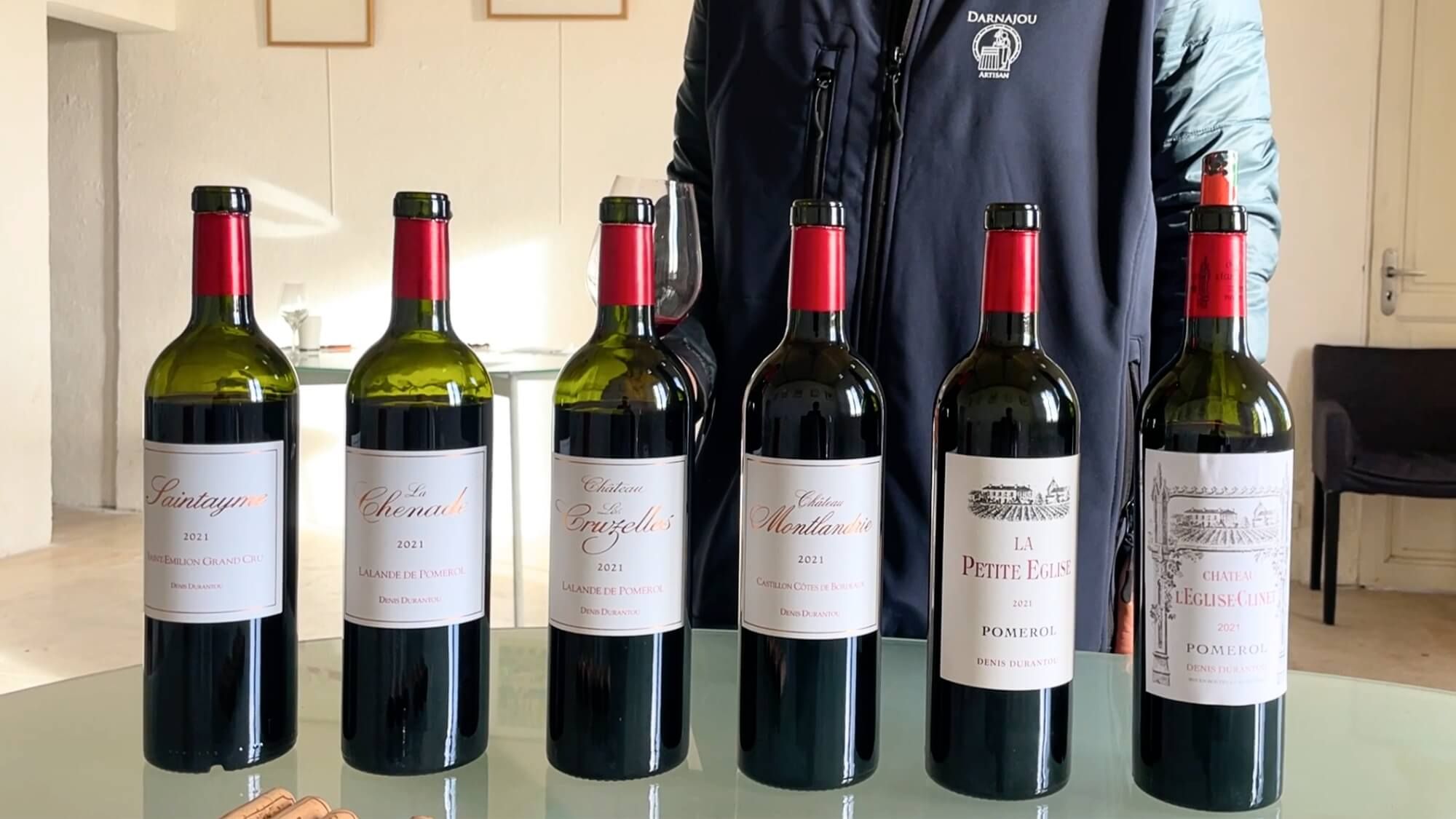
The 2021 vintage from sandy soils in Pomerol is rather flat, as the vines absorb too much water, leading to large Merlot grapes without concentration, and even the typical lively fruitiness disappeared.
Médoc
In Médoc, only the well-known Grands Crus still stand out; there are not many shining stars among the entry-level wineries.
Thanks to severe selection processes, high percentages of saignée (bleeding), gentle extractions, and the inclusion of later-harvested Cabernet Sauvignon of still-good quality, many of the renowned wineries manage to save this vintage at the last moment. However, the yield for most is about half of the normal production.
The Cabernet Sauvignon blends in 2021 exude a “warm-hearted” vibe, being much softer in both structure and tannins than in past vintages. If they could mark their nose with precise fruitines and avoid mid-palate hollowness, they are quite charming.
Saint-Julien and Saint-Estèphe are particularly impressive this year. Nearly all the wines from Saint-Julien carry a subtle sweetness, offering an unusual sense of “maturity” for a cool vintage. Château Gruaud Larose, Château Léoville Barton, Château Beychevelle, and Château Talbot are notable examples.
The late-ripening Saint-Estèphe, especially the vineyards near the Gironde River in the northern part, face less pressure from mildew and boast more aromatic fruitiness.

Château Calon Ségur emerge as the biggest winner in 2021, luckily avoiding frost and suffering less from mildew. The ability to wait for phenolic ripeness with healthy grapes is key to its success. I believe the 2021 Château Calon Ségur is one of the few wines that surpass the Big Vintage like 2018, making it a truly gem to collect.

Another winery worth mentioning is Château Lafon-Rochet, which presents a surprisingly softer expression in 2021, intriguing me a lot. Bordeaux enthusiasts with a sensitive nose should start paying close attention to it.
As for the top-level Crus, the average level is still very high. Though lacking in magnificent aromas, the palate is nicely delicate, and instantly recognizable once you taste them. To me, Château Margaux is the king of the Left Bank in 2021, hiding a masterful piece of papercraft-like art within its serene and unadorned world.

The entry-level Médoc wineries generally do not perform as well as their En Primeur tastings. I believe Mildew, mechanical harvesting, and inadequate selection are common issues for this kind of wineries.
“Unclean” is a term that frequently appeared in my tasting notes in 2021, urging extra caution before purchasing.

Pessac-Léognan
The red wines, in Pessac-Léognan this year, have shown a significant variation in quality due to the impacts of frost and mildew. It’s a rare sight to find wines that managed to balance maturity with concentration.
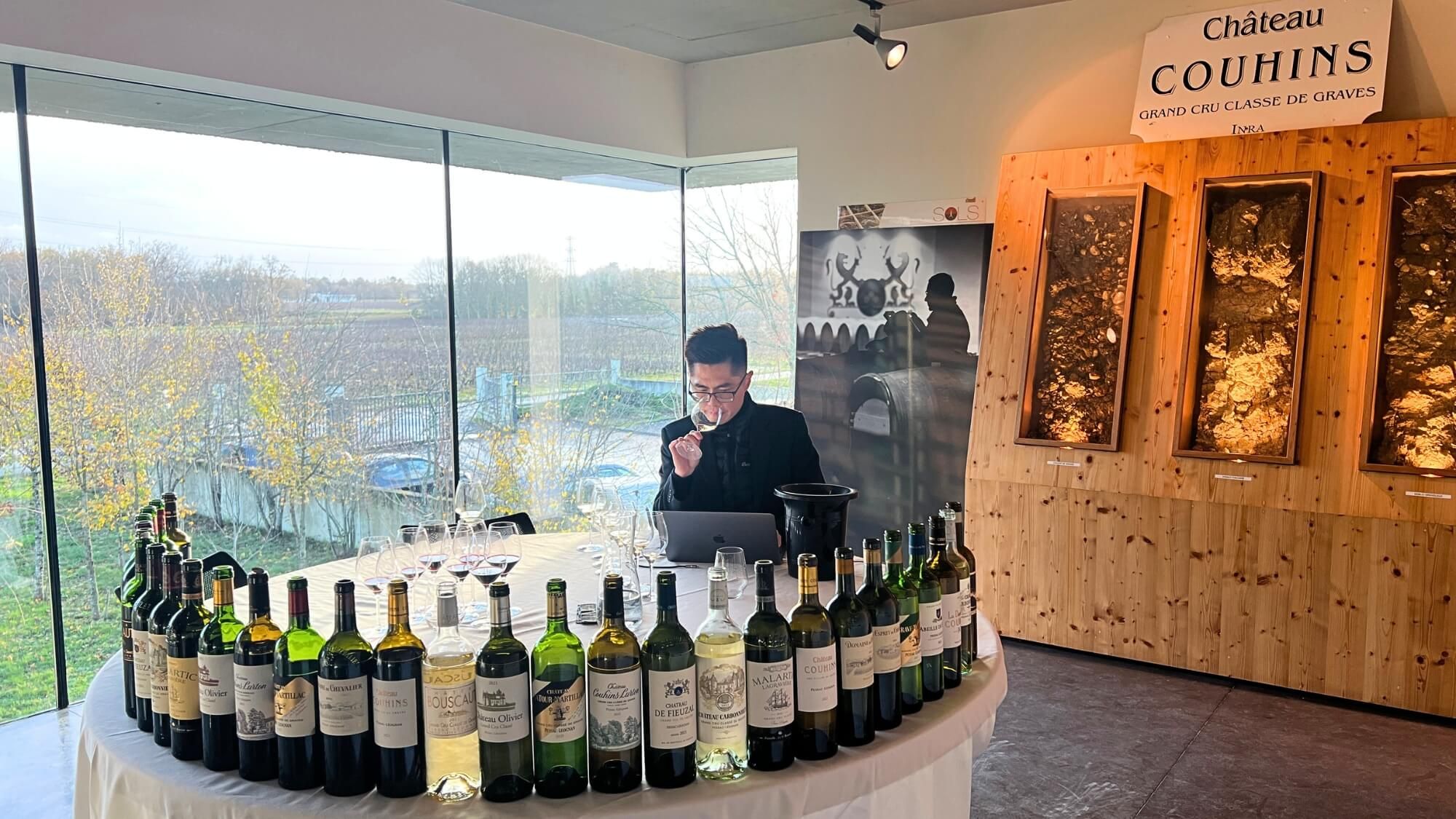
However, two approachable Crus Classés, Château Latour-Martillac and Château Olivier, break through my defenses unexpectedly.
Château Latour-Martillac, leveraging high-quality Cabernet Sauvignon and meticulously selected press wine, showcases an unexpected richness. In a blind tasting, it’s challenging to associate it with the 2021 vintage.
Château Olivier, utilizing top-grade Cabernet Sauvignon from the Bel Air vineyard, delivers an ideal complexity, rich texture, and a rarely ripe blackberry aroma for this vintage. Considering their En Primeur prices, I’d suggest stocking up a few more bottles for your daily-drinking collection.
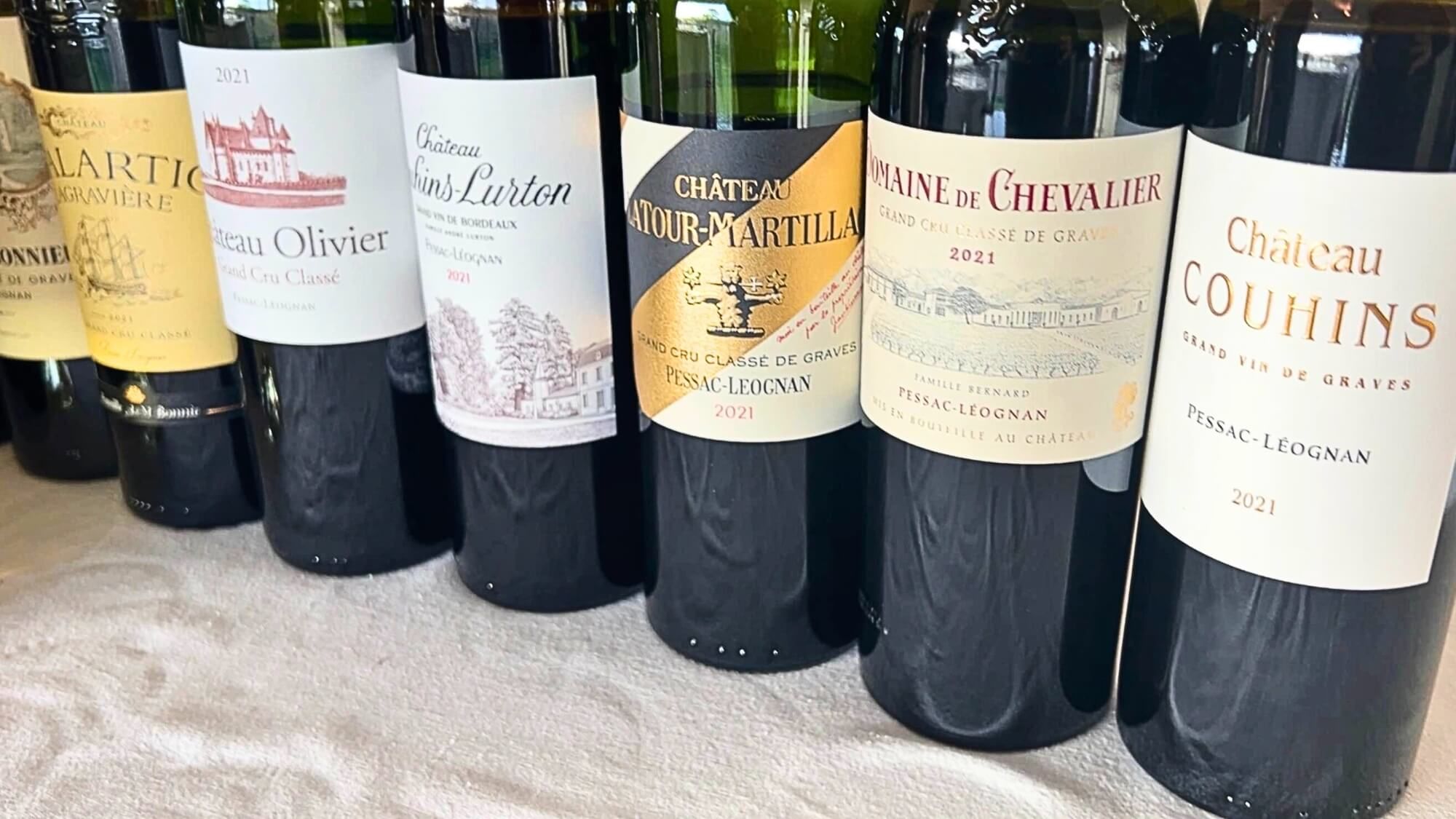
The white wines of Pessac-Léognan in 2021 are nothing short of stellar. This vintage’s acidity could rival Riesling, its body could compare to Chardonnay, and its concentration might remind you of a sumptuous Viognier. On the nose, its aromas are like a kaleidoscope of colors, dazzling and varied; the entry on the palate, it is as sharp and defined as Lin Chong’s spear dancing on the snow grounds; and the finish tastes like chilled nectar, clear and super soothing.
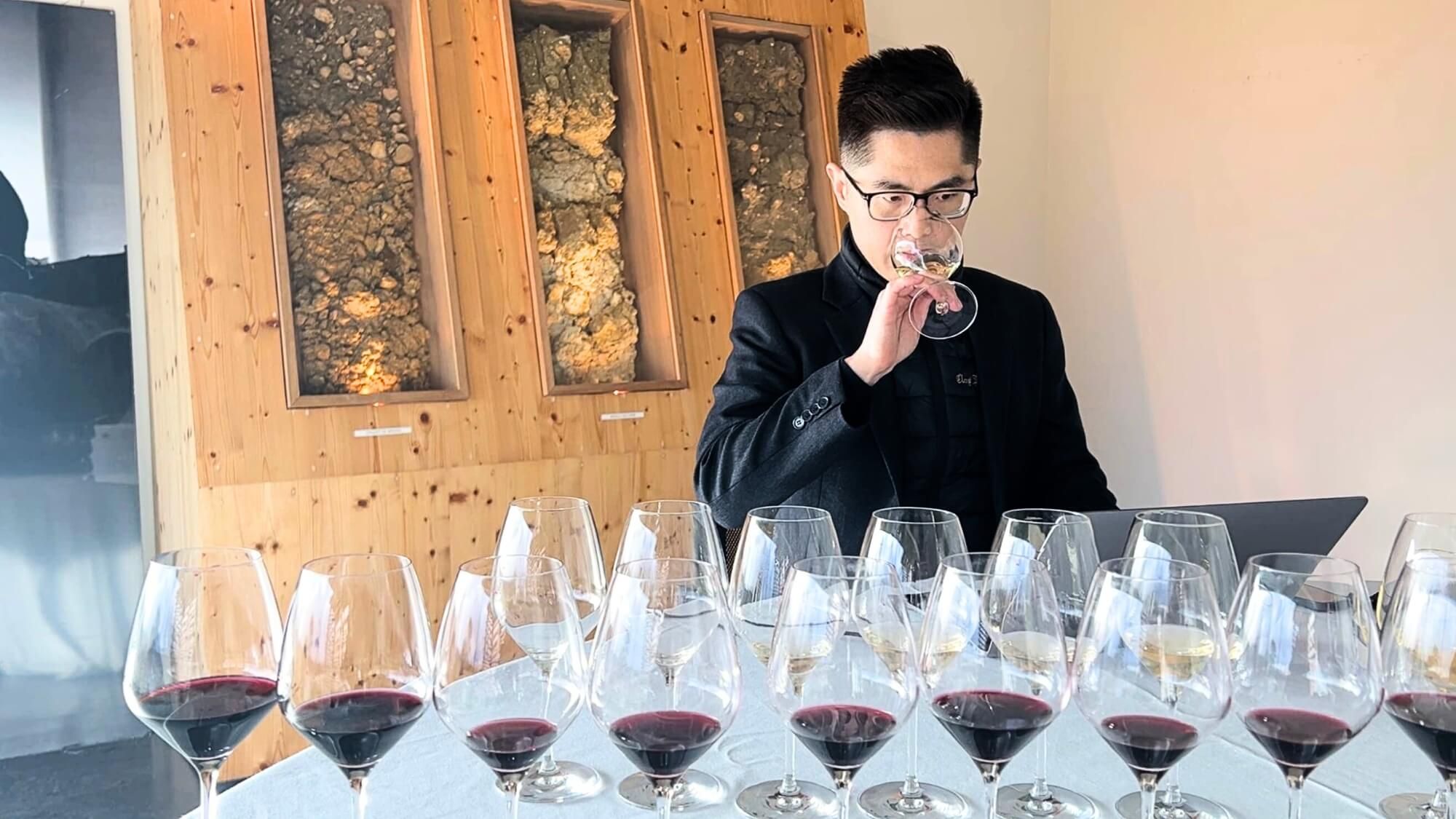
In my opinion, many estates have reached their historical quality this year, especially the whites from well-known wineries. For those with enough budgets, going directly for Château Haut-Brion and Château La Mission Haut-Brion is the best choice. For more budget-conscious, rational buyers like me, I wouldn’t hesitate to choose Domaine de Chevalier, Château Malartic-Lagravière, and Château Smith Haut Lafitte.
For wine lovers who like crisp white wines, I recommend trying Château Couhins 2021. You will feel what I am talking, a flash of lightning from a clear sky.
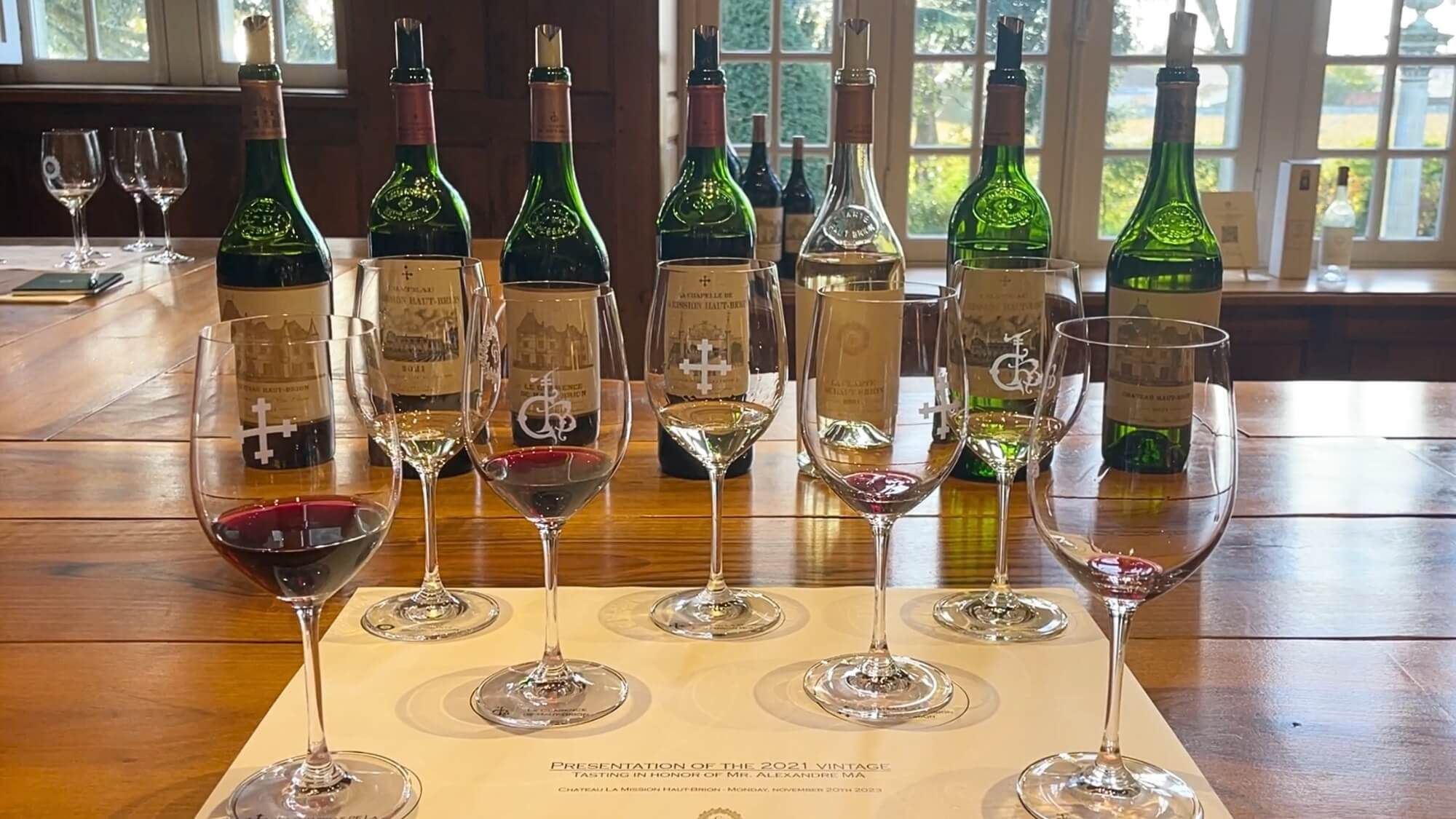
Sauternes
2021 was a brutal year for the Sauternes, enduring frost, hail, cold snaps, and relentless rain, pushing the growers to their extreme limits. Many vineyards yielded tiny production or zero. Yet, leaders like Château d’Yquem and Château Suduiraut embraced the challenge, waiting until October to harvest the best part, and meticulously sorting grapes without regard to cost.
Their perseverance paid off. The botrytized grapes harvested at the last moment are not only exceptionally aromatic and concentrated but also exhibited a level of acidity reminiscent of Chenin Blanc botrytized wines, a notable achievement for Sauternes.
Tasting Château d’Yquem and Château Suduiraut from this vintage was an emotionally charged experience; I was nearly moved to tears. Their quality was so compelling that, if not for maintaining some semblance of dignity, I could have easily finish the entire bottle by myself.

To encapsulate the 2021 Sauternes in ten words: Limited in quantity, yet unequivocally the trump card.
Given the adverse weather conditions of 2021, it’s improbable that any Sauternes winery profited. Should you encounter this vintage from Château La Tour Blanche, Château Rieussec, Château Doisy Daëne, Château Sigalas Rabaud, Château Coutet, or Clos Haut-Peyraguey, seize and taste them without hesitation.

Conclusion
That concludes my exploration of the 2021 vintage in Bordeaux. It’s clear now how challenging this vintage has been for the region! When purchasing Bordeaux 2021, don’t just follow the reputation of Château; even some renowned estates have stumbled this year.
To satisfy various tastes and demands for Bordeaux wines, I’ve prepared a useful AMA selection 2021 covering different categories of wines. I believe it will serve as your guide to find your Mr. Right and safeguard your wallet.
As a final note, allow me to offer a quick guide to navigating the vintage of 2021 in Bordeaux:
- Weather unpredictable, vintners tirelessly vigilant;
- Quality varies, yields bashfully low;
- Technique and terroir are indispensable;
- Reds are delicate, whites supremely reign.
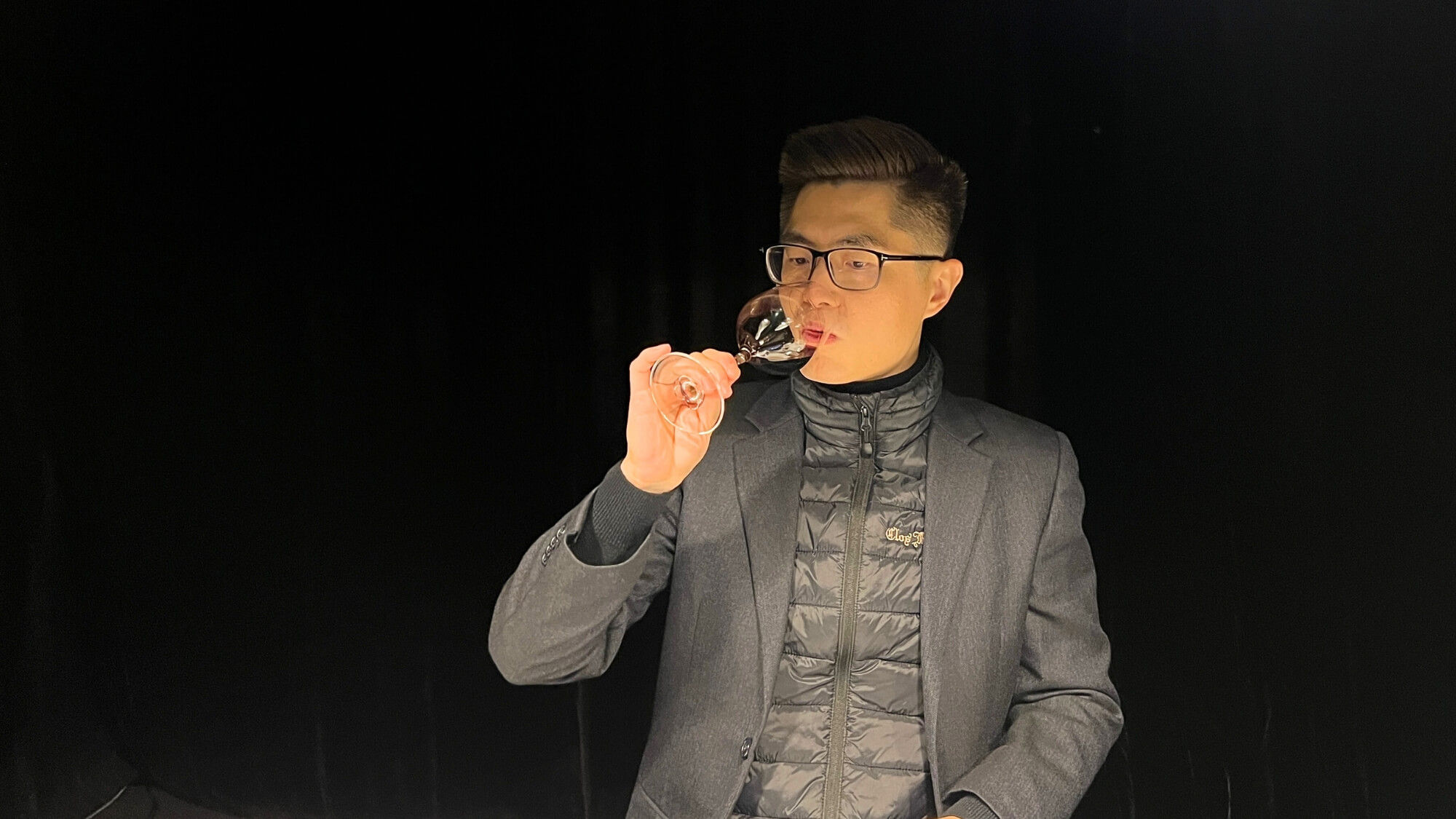
This is my entire comment about the vintage of 2021 in Bordeaux. Detailed reviews of all the wines I’ve tasted are available on my website. If you’re already our subscriber, you can log in at www.alexandrema.com to access bilingual comments. If you haven’t joined yet, now is the perfect time to register!
Your support is the driving force behind my continuous improvement!
See you soon, cheers!
